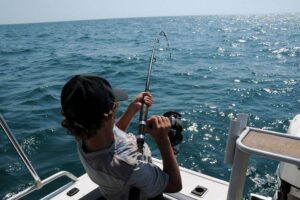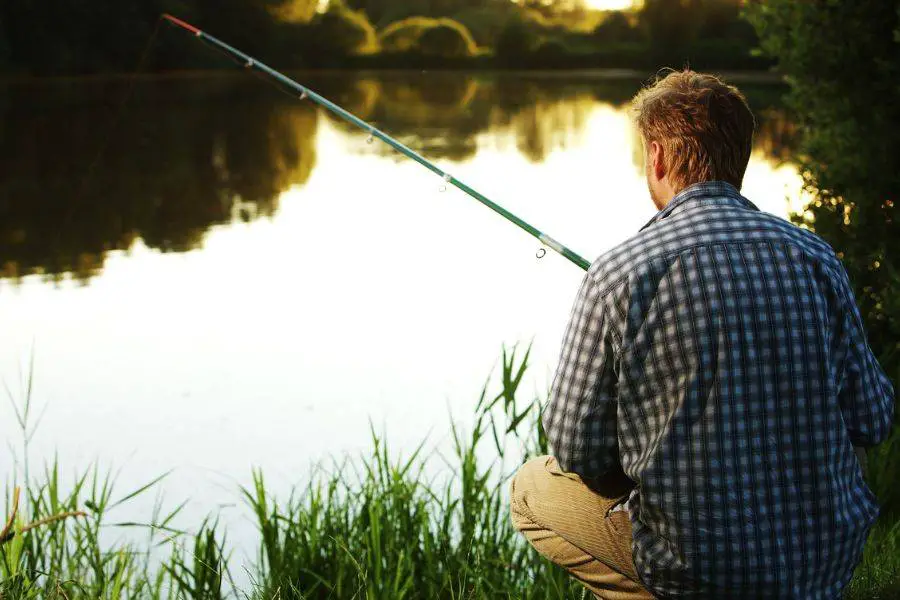Table of Contents
What kind of rod do I need for fishing? What is the difference between medium and medium heavy rods? Are medium heavy rods better than medium rods?

These are some of the questions posed by many beginner anglers and enthusiasts.
Medium rods and medium heavy are words used to describe a rod’s power.
Rod power refers to how much weight a rod can handle before it starts to bend. This should not be confused with action, which refers to how fast a rod bends.
Stick with us and we promise to answer your questions on medium and medium heavy fishing rods.
At the end of this article, you will know how to make better decisions when selecting a rod.
Medium Rods
Medium rods are the most versatile and as such are the most used. They have the backbone to support a variety of weights and can be used for many types of fishing operations.
They are suited for freshwater fishing and catching small fish like bass, pike, walleye, and lake trout.
When using a medium rod, you want to use smaller lures with them, nothing more than 3/8 oz. They are ideal for lures that weigh between 1/8 to 3/8 oz.
Medium Heavy Rods
As the name suggests, they are stronger than medium rods and they can handle heavier weights than medium rods.
These poles are great for catching bigger freshwater fish, such as pike, salmon, and catfish. Medium heavy rods can support lures from 3/16 to 1/2 ounce.
Medium heavy rods are better in situations where you need to reel in your catch as quickly as possible.
How to Select the Right Rod
When picking a rod, you need to consider a few things. The size of the lure, the size of the fish, the line size, and the technique. I know that might sound like a lot, but it is not as you will see as you read on.
As we have already explained, the power determines how much load a rod can carry before it starts to bend.
Medium rods range from ultra-light to heavy.
The most important thing to take note of is that a medium heavy rod takes more weight before bending than a medium rod.
Weights
All the weights eventually add up. To avoid having problems when casting or even breaking your rod. You must think about the combined weight to be placed on your rod.
Lure Weight
The lure weight is the first you need to think about. You can check on the rod for the recommended lure size.
This will be displayed somewhere on the handle. Never assume the lure size, there are no set standards and manufacturers don’t make the same rod. So, a medium rod from one manufacturer may differ from another.
When you think medium rod, think smaller lures. Most medium rods take lures of ¼ ounce and less.
Some medium rods can handle weights up to ½, but ideally, it is best to use smaller weights with medium rods. Using heavier lures, for example up to 1 ounce will cause your rod to bend too much.
Medium heavy rods are best used for heavier weight, anything above ¼ ounce.
Using less than ¼ ounce lures on medium heavy rods will lead to problems and there will be an insufficient amount of bend on the rod. A stiff rod can cause issues with casting.
Line Weight
The line weight is determined by the size of fish you want to catch, and this must correlate with the power of the rod.
A bigger fish will need a stronger line than a smaller one.
Medium rods support line weights of 1/8 – 3/8 oz while medium heavy rods support weights of 3/16 – 1/2 oz.
To avoid line breaks do not use smaller lines with medium heavy rods.

Hooking the Fish
How do rods handle different hooksets?
For broad classification, there are two types of baits and they are classified as either open or closed.
With opened hooks, the bait offers very little resistance, and the fish bites directly into the hook.
Examples of open hook baits include; treble hooks and crankbaits.
These types of bait use light hooksets and once a fish bites into the bait it is caught tight because the fish is biting directly into the hook.
Imagine applying too much pressure or tension by pulling too hard on a light hook that is already tight. You would easily tear the mouth of your catch and lose it.
Medium rods are the best for this type of hook.
On the other hand, there are hook baits that feature hidden hooks. A fish has to bite through multiple layers before reaching the hook.
A good example of this is a fishing jig, which is covered with layers of weed. These types of hook baits use heavy hooksets.
The hookset has to be strong as it must pass through so much resistance before lodging in the jaw of the catch.
Medium heavy rods have a better design for these kinds of hook baits that spot heavy hooksets.
If you use medium rods with them you will end up with an overly bent rod that offers no tension to hook any fish.
You must also think of the type of hooksets that accompany your lure when selecting a good rod for yourself.
Use medium rods where you have multiple hooks or open hooks, and use medium heavy rods when you have hooks buried in layers of bait.
Technique
We have already mentioned action, and we said it refers to how fast a rod bends.
Well, you can also think of it as where the rod bends.
There are four main classifications for action; moderate, fast, and extra fast.
Moderate action rods bend from the top half, fast action rods will bend at about a quarter length of the rod while extra fast action rods bend at the tip.
Your casting technique plays an important role in determining your rod.
Let’s say you want to fish by the river bank or any other type of fishing that requires an overhead cast.
A moderate action rod is best for this. Medium rods shine here because they are more flexible and provide more bend. This is also applicable if you want to cast from a short distance from a boat.
When casting over longer distances, you want to have smaller bends at the tip of your rod. This helps create the best tension and feel with your catch.
Medium heavy rods are more suitable for this type of cast. If you use a medium rod it will be too loose and any sudden movements by the fish will cause the rod to move in that direction, thereby causing you to lose the tension and feel with the fish.
Takeaway
There is no better or worse rod for angling.
You can only be using the wrong rod. Depending on your technique, lure size, and bait type, you should select the rod that will work best for you.
We know by now you will be able to make the right choice as a beginner as to what type of rod you should buy.
If you are a more experienced angler trying to have more success with your catches We hope this article helps you have a “reely” good day next time out.

